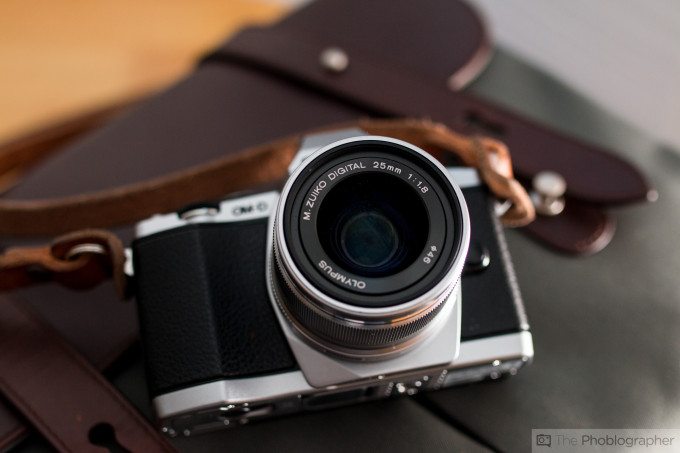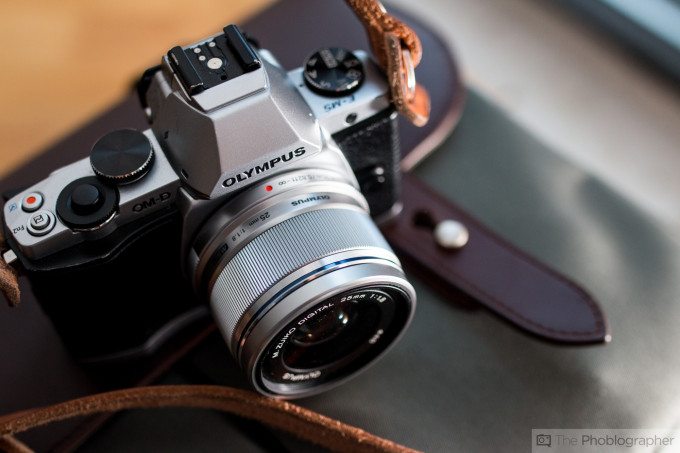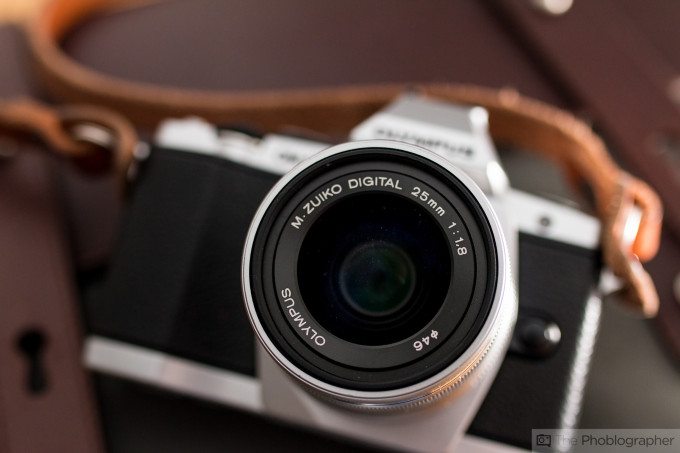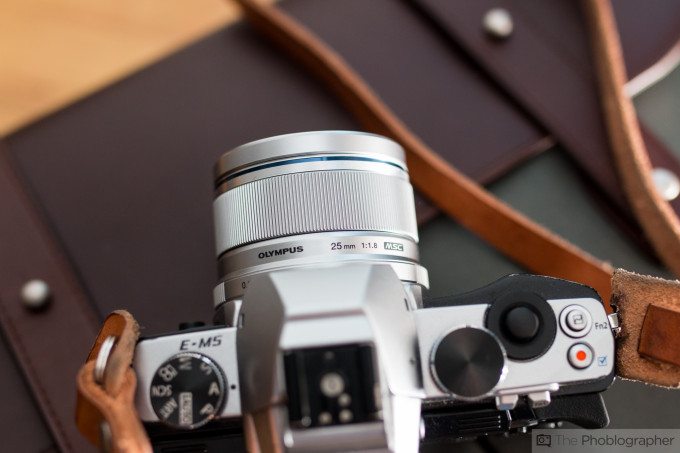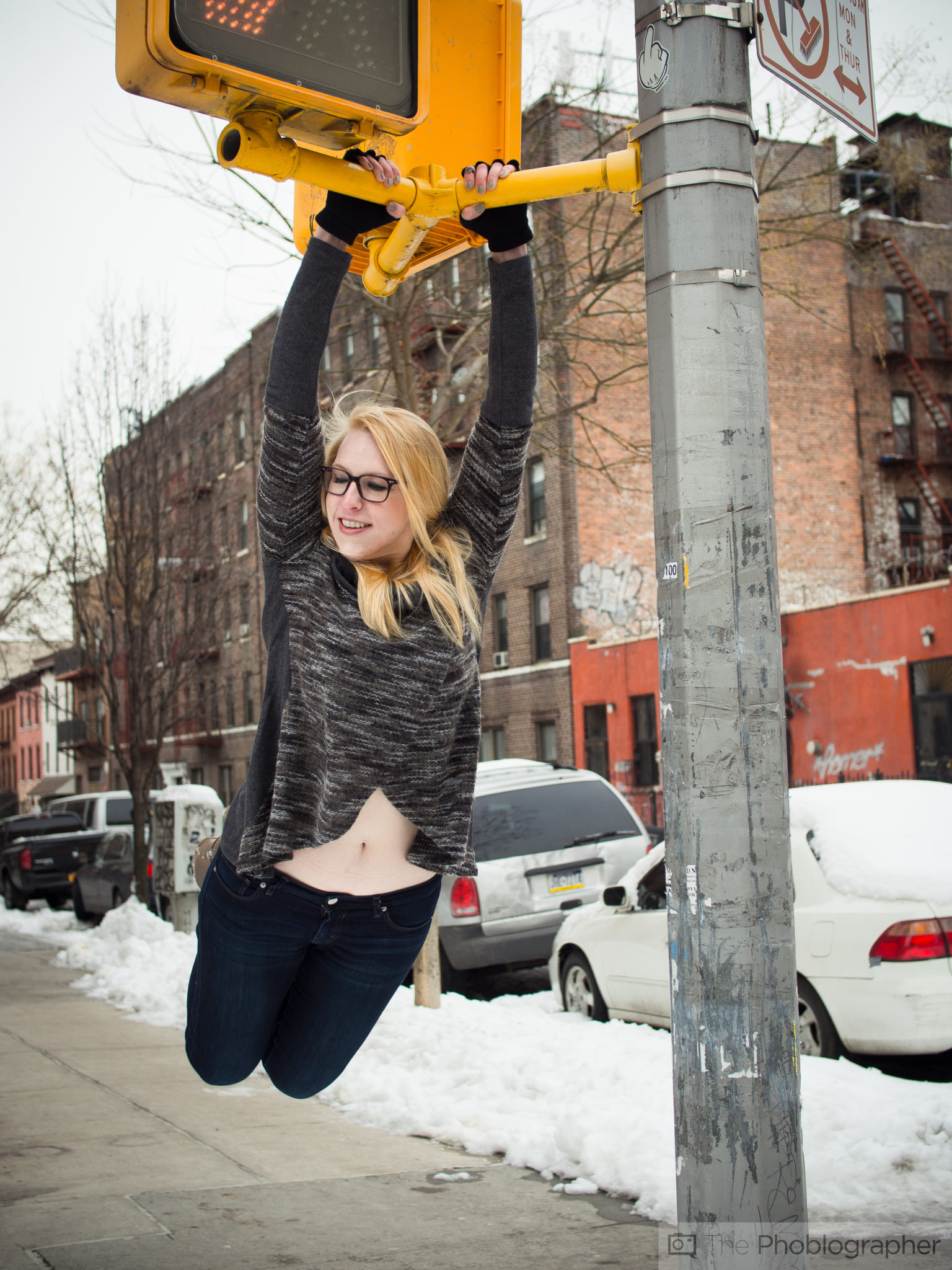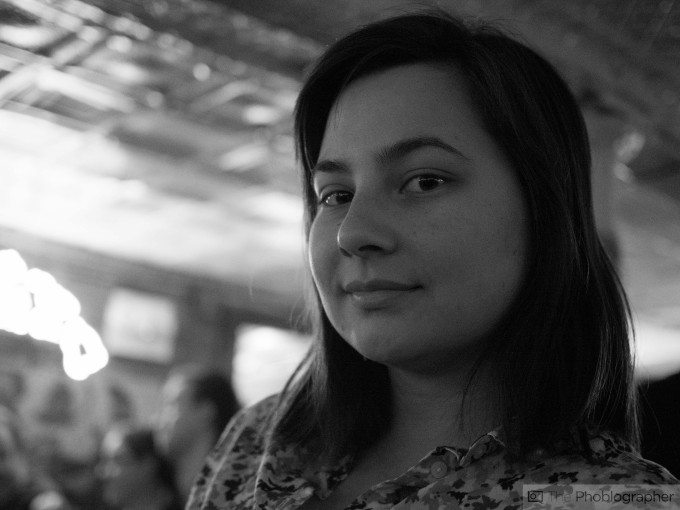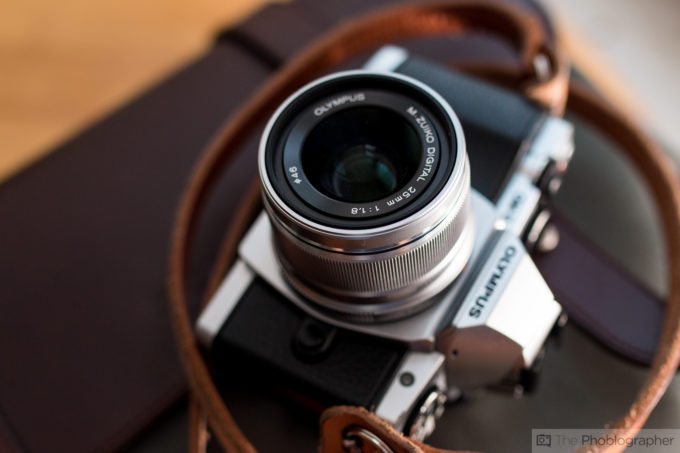When Olympus first told us about their 25mm f1.8 lens, we were thrilled that they finally created one. For many years, the scene has been dominated by the Panasonic 25mm f1.4 which is a good lens in its own right, but isn’t the affordable option for many. But just because this lens is affordable doesn’t mean that it doesn’t deliver.
In fact, it made our jaws drop.
Pros and Cons
Pros
– Super sharp wide open and stopped down a tad
– Small and light
– Fast focusing performance in various lighting situations
– Smooth bokeh
Cons
– We wish it were a tad faster to f1.4
Gear Used
The Olympus 25mm f1.8 was tested with the Olympus OMD EM5 and the OMD EM10.
Tech Specs
Specs taken from the B&H Photo listing of the product.
| Features | |
|---|---|
| Autofocus | Yes |
| Physical | |
|---|---|
| Filter Thread | 46 mm |
| Dimensions (DxL) | Approx. 2.2 x 1.6″ (5.59 x 4.06 cm) |
| Weight | 4.8 oz (136 g) |
Ergonomics
The Olympus 25mm f1.8 is a very plain and simple lens. And we’re very serious that–in fact, we’ve called it extremely minimal. The front of the lens has the obvious Olympus badging, front element and filter thread.
The lens itself has no mechanical controls with the exception of the large manual focusing ring. The focal length is perhaps too long for Olympus to have put a snap back focusing ring of it with a depth of field scale. Or perhaps they really wanted to keep the cost down.
Ease of Use
For the most part you’ll just be pointing, shooting and enjoying. The lens has no snapback focusing mechanism that some of the wider focal lengths have, so there is nothing to worry about when it comes to manually focusing. Instead, you’ll need to go into the menus and switch to that particular setting.
We expect most folks to autofocus with this lens and manually select the focusing point though.
Build Quality
The build quality of this lens feels somewhat plasticky, but not at all cheap. It’s surely an affordable lens by conventional standards, but we would’ve liked a bit more of a metallic feel to it. Additionally, it’s got the weirdest lens hood that we couldn’t figure out how to attach. Overall, we just wish that Olympus made it feel a tad more high end.
Autofocus

Trust us when we say this: wow.
No really, of any Olympus lens that we tested, this one’s hit rate was amongst the highest. To be clear, we usually test our lenses by manually selecting a focusing point after framing a scene, then focusing and releasing the shutter.
A vast majority of the time, it nailed the focusing with no problems. Additionally, we usually shot at f1.8. The fact that we’re shooting at f1.8 on a Micro Four Thirds camera translates into approximately f3.5 on a full frame camera. The reason for this is because of the size of the sensor. In effect, this means that at any given aperture, much more will be in focus with a Micro Four Thirds camera than with a full frame DSLR or mirrorless option.
While in line with this thinking, one can then make a logical conclusion that it’s tougher to get something out of focus with a Micro Four Thirds camera than it is with a full frame or APS-C offering–and they’d be completely correct.
What that also means though is that you’ll be able to get some glorious bokeh with more in focus at a given aperture. The bokeh may not be as dreamy as what a full frame camera can offer you, but it’s still really good.
And with that said, we’re happy that the focusing isn’t only accurate but fast. If you’re shooting portraits, the OMD system’s face detection is also a major help in getting something accurate–providing it really detects the face correctly.
Image Quality

So what do we have to say to the overall image quality from the Olympus 25mm f1.8?
It’s pretty damned amazing. Olympus said to us that they basically took the same formula for the 45mm f1.8 and modified it to work with the 25mm focal length. And it seemed to have worked. The 45mm f1.8 is one of the sharpest and most affordable Micro Four Thirds lenses that we’ve tested, so it’s only natural then that the 25mm f1.8 is right up there.
But when you consider that it is a wider focal length, then you’ll get less bokeh at a given aperture, correct? Yes, but we didn’t find this to be a really big damper on the images that we created.
Whether you’re going after food or fashion work, this is a pretty damned good lens. However, the 45mm will have less distortion because it is a longer focal length, so it will be better for portraits too. That doesn’t mean that the 25mm can’t handle portraits well though. We did two days straight of long and arduous shooting with the lens.
As an every day lens, you really can’t sit around and complain about the results that it gives you. And with that said, you’ll probably never want to stop it down.
Sharpness
Wide open, this lens is a complete stunner. After my first day of shooting in natural light, I concluded that there really isn’t any point in stopping the lens down. When a strobe was mixed in, I stopped it down or tried to get the light to output at f1.8 at ISO 200.
Stopping the lens down makes it marginally sharper, but there really isn’t any point once again. At f4 you start to see diffraction due to the Micro Four Thirds size sensor.
Color Rendition
Look at that image above and seriously tell me that you wouldn’t expect to see something like this on a Tumblr blog or Food blog? The colors are insanely accurate right out of the camera and if you process them more in Adobe Lightroom 5 you’ll deliver something even better.
However, when working with Olympus’s sensors, we recommend not boosting the overall saturation and instead doing it by color channel.
Color Fringing
Straight out of the camera, it is very hard to find any sort of color fringing. But when you start adding a tad of contrast, you’ll start to see more of it. To be clear though, this rarely happened. There is another photo that we shot that looks like it has color fringing when zoomed out. But when in at 100%, the fringing isn’t there.
Bokeh
If you’re up close and personal to your subject, the bokeh is delicious, smooth, and creamy. This bokeh though will best be served when up close and when wide open–which means that it isn’t so great for up close portraits due to the 25mm focal length and any distortion that might occur. Move back a bit though and you’ll be fine. This is perceived distortion mind you, and the bokeh is still really good in portraits.
Extra Image Samples
Conclusions
Were to expecting anything less? Take a working formula, adapt it to another focal length, make it affordable, and give it kick ass autofocusing skills. Sounds like a winner to us. In fact, the 25mm f1.8 is one of the most affordable and bang for your buck lenses out there for the Micro Four Thirds system. In general, we’re quite impressed with the sharpness, bokeh, fast focusing speed (coupled with accuracy), small size, and the overall feel that it is the single lens that you may want to keep mated to your camera forever.
And we’re really not joking about that one. At $399, you really can’t go wrong.
Recommended Cameras and Accessories
Olympus OMD EM1– The company’s current flagship OMD camera is also the one that it will focus fastest with as well have the best image quality with.
Olympus OMD EM5– Most folks own the EM5, and believe us when we say that you won’t want to take the lens off the camera.
Please Support The Phoblographer
We love to bring you guys the latest and greatest news and gear related stuff. However, we can’t keep doing that unless we have your continued support. If you would like to purchase any of the items mentioned, please do so by clicking our links first and then purchasing the items as we then get a small portion of the sale to help run the website.
Also, please follow us on Facebook, Google+, Flickr and Twitter.


